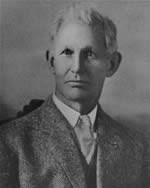Why Phoenix changed Olive to Dunlap
If you've lived in Phoenix in the past 100 years or so, you've seen a lot of name changes of the streets. For example, Pima was changed to 3rd Street, Christy Road was changed to McDowell Road, Mission Drive was changed to 27th Avenue, Chicago was changed to 44th Street, and Olive was changed to Dunlap.
The reason for all of these changes was to try to make the consistent system that we all know today. And the reason that the names weren't consistent is that Phoenix has always grown by "leap-frogging", that is, an area is developed waaaay out there, given names, and by the time the city has grown to there, the street names wouldn't match, and a decision had to be made. For people who need to travel around a big city, it's wonderful, but it probably made for some big fights to make it happen.
 |
| Map of Phoenix, Arizona in 1881 |
If you lived in Phoenix in the 1800s, you would have known that the north-south streets were named after after Indian tribes. As the city grew, the decision was made to use numbers instead of names. Streets west of Central Avenue were renamed "Avenues" and east of Central Avenue, "Streets". It's a pretty logical system, and to this day you can easily know that you are, for example, 16 blocks east of the middle of downtown Phoenix when you are on 16th Street, or 16th Avenue. If I know human nature, there was a lot of resistance to that, with fists being pounded on tables, and old-timers refusing to change!
Then the city started to grow with "Additions", which we call "Subdivisions" nowadays. And when a builder built waaayy out there, they named their streets anything they wanted to. So when the city grew out to that particular area, the Common Council stepped in and made the area rename the streets. If they hadn't done that, then a particular street would have a completely different name for just a few blocks. This had to be miserable for the people living there, and the businesses, who had to change their addresses. Again, I can hear a lot of protesting!
This went on all of the way through the 1960s, and by that time the City of Phoenix was imposing its name and numbering system on the surrounding cities. If you look at postcards of Scottsdale before the mid-sixties you will see addresses that number from Scottsdale Road, instead of Central Avenue in Phoenix. So Scottsdale Road wouldn't have been 72nd Street, it would have been zero, with each street east and west of Scottsdale Road 1st, 2nd, etc. It was the same way in Glendale, although the changes there go back to the 1950s. And of course all of the suburbs of Phoenix had to comply. Places like Tempe kept a lot of their original name and numbering system, and if you travel around the valley, you'll see more of that. My favorite is the original names of the streets of Peoria never changed just west of Grand Avenue. Drive over there and you'll see Jefferson, Madison, and Monroe.
 |
| Olive/Dunlap in the 1950s |
But my favorite is when Olive was renamed to Dunlap in Phoenix. Now waitaminute, I don't mean when Dunlap becomes Olive in Glendale, which is still true today, I mean when the City of Phoenix had the same street named Dunlap east of Central and Olive west of Central. And for consistency, they decided on Dunlap. The reason for this might be that Dunlap was named after a former mayor, but I'm really not sure. And it may have been that there were more businesses east of Central on Dunlap in Phoenix than west of Central in the early 1960s. For whatever reason, the City changed the name from Olive to Dunlap. But the City of Glendale refused the change, which is why the exit on the 101 is Olive, and the exit, for the same road, on I-17 is Dunlap (very confusing for my winter visitors!). Looking back, it probably would have been better for the road to have a consistent name, but apparently there wasn't agreement. That doesn't surprise me, and what surprises me is how much agreement was made over the years.
Image at the top of this post: Mayor John T. Dunlap in 1913. He was the mayor of Phoenix from 1904 to 1905.
If you liked this article, and would like to see more in the future, please consider becoming a patron of History Adventuring on Patreon. If you're already a patron, thank you! Your pledge makes this happen!
Click here to become a Patron!




Comments
Post a Comment